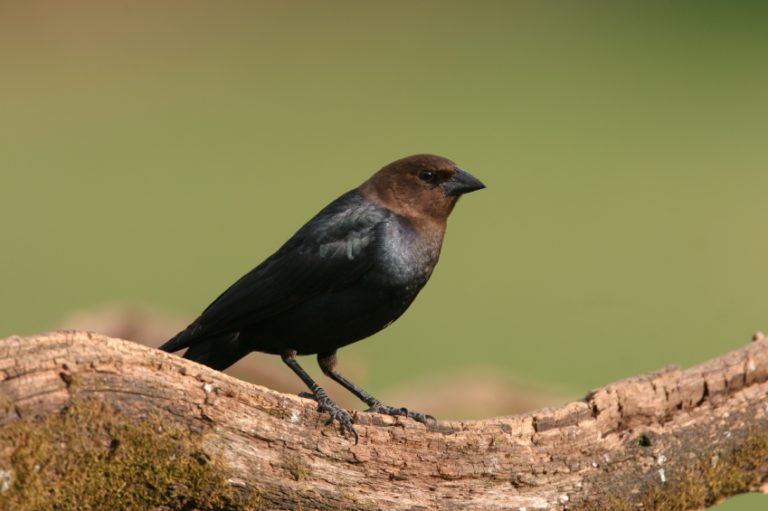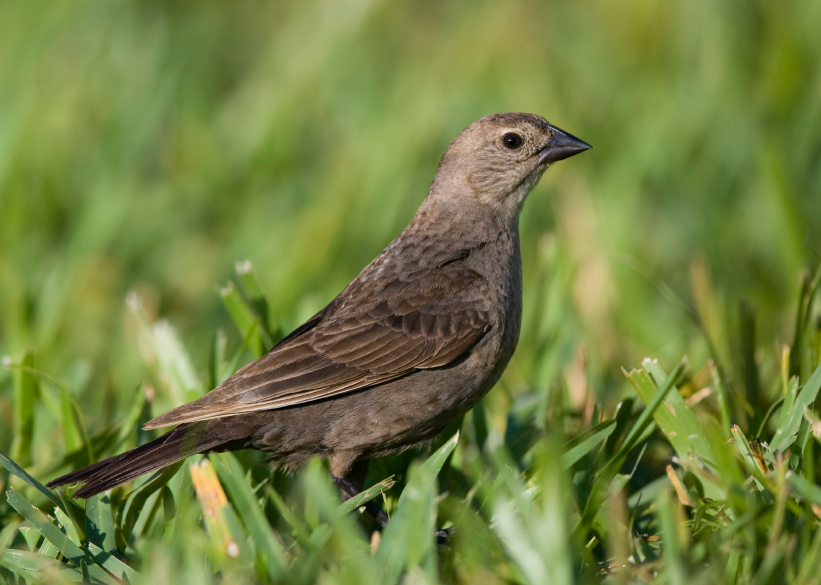Molothrus ater
Why do bird-lovers have a “beef” with “Buffalo Birds?” Originally the Brown-headed Cowbird was only found on the plains of the Midwest where they trailed bison, feeding on insects stirred up by the roaming herds. Their nomadic lifestyle led to a habit of depositing their fertile eggs in the nests of other birds. Now that the forests bracketing the plains have been broken up for human habitation and agriculture, Brown-headed Cowbirds are found across the continent. Unfortunately, the females continue to leave brooding and rearing of young to other songbird species, a trait called “brood parasitism.” Often the natural prodigy of the host birds do not fare as well as the cowbird chicks. Add the fact that females typically lay 40 eggs per season, and you understand their relative unpopularity!

Male Brown-headed Cowbird
Identifying Brown-headed Cowbirds is fairly straight forward: the name says it all. Males are a glossy-black bird with a brown head, neck, and upper chest. Females are a little more difficult. The key is to look for a plain brown-grey bird with virtually no streaking in their plumage. Confirm it is a female cowbird by looking at the bill. Both sexes have a thick, stubby, crow-like bill.
The song of the Brown-headed Cowbird is unique and therefore easy to recognize. The first phrase of the song is a liquid-sounding “glug-glug” followed by a buzzy whistle that lifts in pitch. There is no other commonly heard vocalization that sounds like this. Hear it in your yard, and you can be certain a cowbird is nearby.
In the northeast, most birds are absent in winter months. These short-distant migrants move to the southeast where they associate with other blackbird species, often roosting in large numbers.

Female Brown-headed Cowbird
Cowbirds prefer habitats with grasses such as pastures and overgrown fields. Much of the egg-laying occurs in surrounding trees and shrubs. Fragmentation of woodlands by roads, power lines, and home sites allow cowbirds the chance to parasitize many of our woodland species’ nests.
Most foraging occurs on the ground where weed seeds make up the bulk of their diet along with insects. Dealing with Cowbird visits to feeders if often a matter of exploiting their tendency to ground feed. They will usually leave elevated feeders alone, particularly the tube style feeders designed for small perching birds. Perch-less feeders designed for arboreal species and woodpeckers are also problematic for Cowbirds.